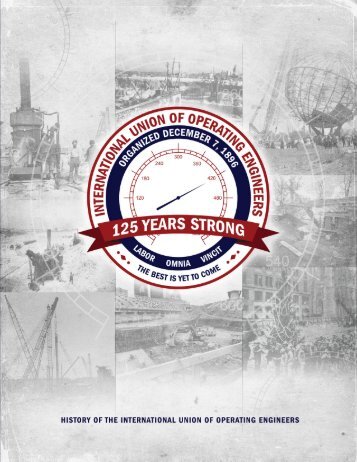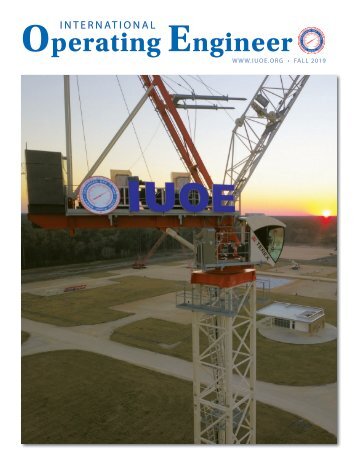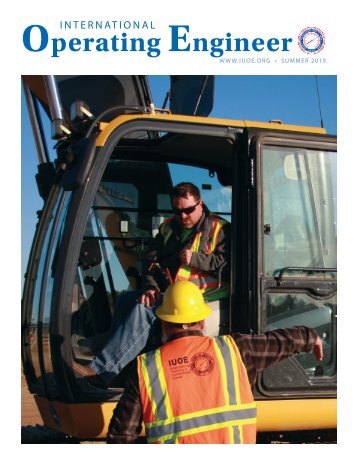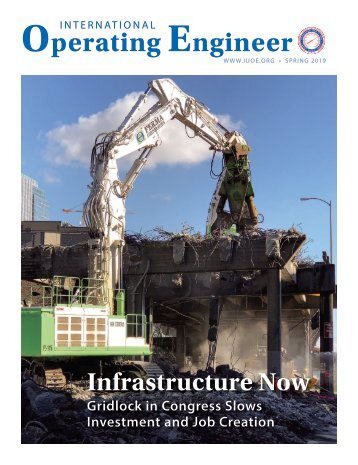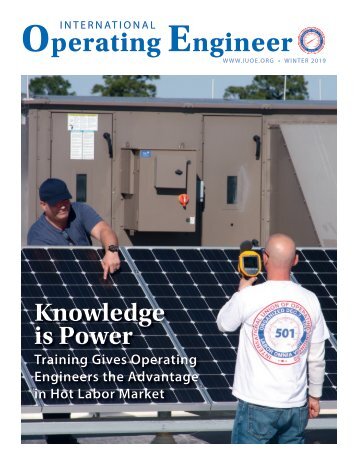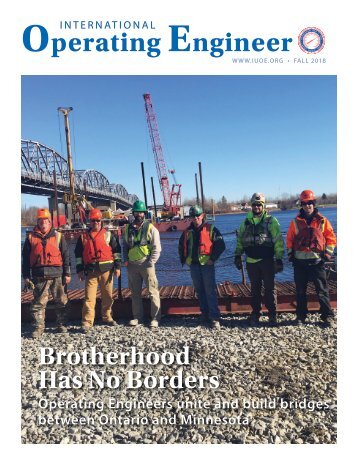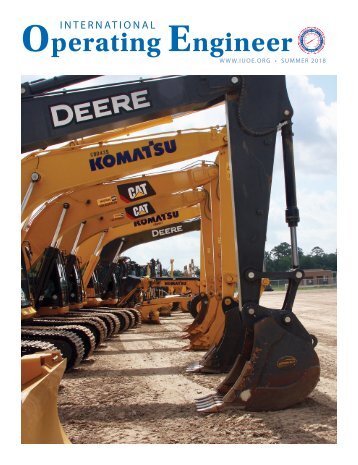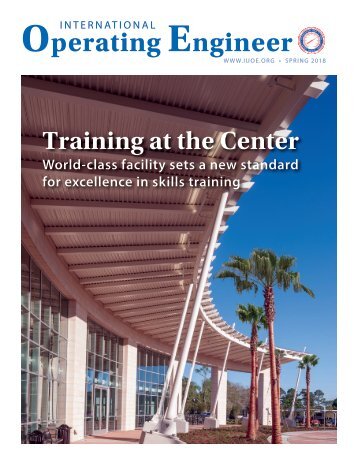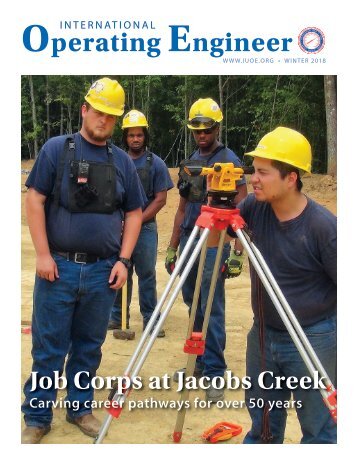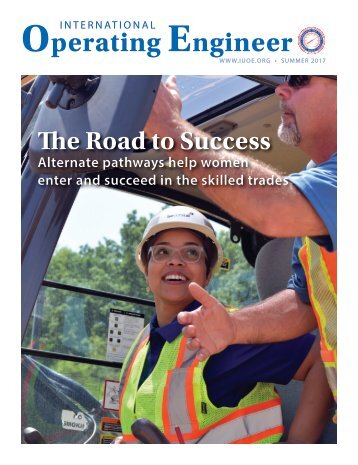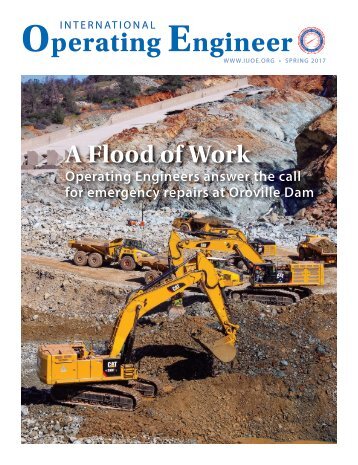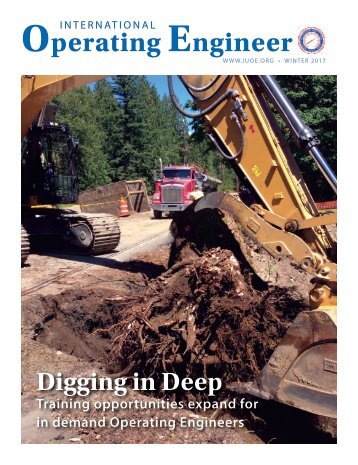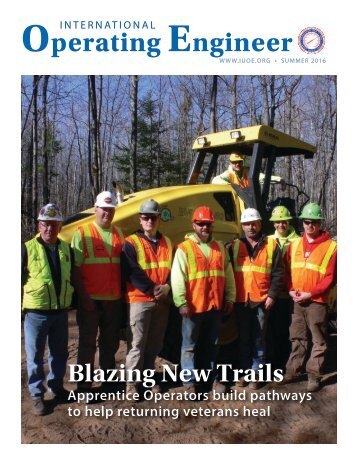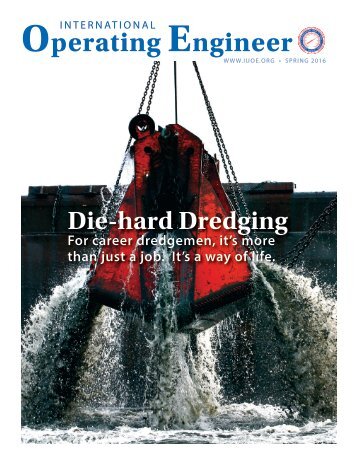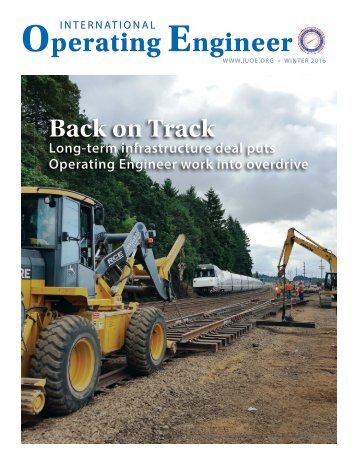125 Years Strong – An IUOE History
- Text
- Wwwiuoeorg
- Vincit
- Omnia
- Engineer
- Convention
- Membership
- Locals
- Operating
- Engineers
INTERNATIONAL UNION OF
INTERNATIONAL UNION OF OPERATING ENGINEERS I.U.O.E. GENERAL PRESIDENTS These men, listed with the locals in which they were/are members, have led the I.U.O.E. and its predecessors since the National Union of Steam Engineers was formed in December 1896. Charles J. DeLong (Local 3, Chicago, IL) December 18, 1896 – August 1897 Frank Bowker (Local 4, Boston, MA) August 1897 – January 1898 Died while in office. Frank Pfohl (Local 11, Syracuse, NY) January 1898 – September 1898 Samuel L. Bennett (Local 6, Kansas City, MO) September 1898 – September 1899 Philip A. Peregrine (Local 1, Denver, CO) September 1899 – September 1900 Frank B. Monaghan (Local 4, Boston, MA) September 1900 – September 1901 George V. Lighthall (Local 3, Chicago, IL) September 1901 – September 1903 Patrick McMahon (Local 20, New York, NY) September 1903 – June 1904 Died while in office. John E. Bruner (Local 18, Cincinnati, OH) July 1904 – September 1905 Matthew Comerford (Local 36, St. Paul, MN) September 1905 – September 1916 Milton Snellings (Local 99, Washington, D.C.) September 1916 – June 1921 Died while in office. Arthur M. Huddell (Local 4, Boston, MA) June 1921 – June 1931 Died while in office. John Possehl (Local 474, Savannah, GA) June 1931 – September 1940 Died while in office. William E. Maloney (Local 150, Chicago, IL) September 1940 – February 1958 Joseph J. Delaney (Local 15, New York, NY) February 1958 – September 1962 Died while in office. Hunter P. Wharton (Local 68, Pittsburgh, PA) September 1962 – January 1976 J. C. Turner (Local 77, Washington, D.C.) January 1976 – June 1985 Larry J. Dugan Jr. (Local 428, Phoenix, AZ) June 1985 – February 1990 Frank Hanley (Local 15, New York, NY) February 1990 – March 2005 Vincent J. Giblin (Local 68, West Caldwell, NJ) March 2005 – December 2011 James T. Callahan (Local 15, New York, NY) December 2011 – present Patrick McMahon John E. Bruner Matthew Comerford Milton Snellings Arthur M. Huddell John Possehl William E. Maloney Joseph J. Delaney Hunter P. Wharton J. C. Turner Larry J. Dugan Jr. Frank Hanley Vincent J. Giblin James T. Callahan many local unions of engineers that existed worked without any singular direction and, consequently, their condition as a whole continued to deteriorate, with engineers at that time typically working 12 hours or more each day, seven days a week, for a mere to per week. What’s more, the heavy equipment with which portable and hoisting engineers worked was more often than not extremely basic, heavy and dangerous, while stationary engineers usually worked in dark, damp and poorly ventilated spaces. The steam engineers who were initially organized into unions when they were first formed in the United States worked in packing plants, breweries, distilleries, laundries and factories and tended to join unions formed by all the employees of the plant. Portable and hoisting engineers usually were allied with unions of longshoremen or other workers in the building trades. But as the minority in these groups, the engineers discovered their particular needs and issues were given little attention by their unions, since they did not concern the majority of the membership. However, the engineers became increasingly more aware of the importance of their craft in the development of industry and the nation as a whole. Indeed, their skills were needed to build railroads, factories and fast-growing cities; dig canals; and erect large projects such dams, waterworks and essential sewagedisposal plants. Meanwhile, the engineers watched the growing power and influence of other building trades that had formed unions and, as a result, were gaining reduced work hours and increased wages, and the engineers realized they, too, must organize. As an essay half a century later in the I.U.O.E. 50 th Anniversary edition of The International Engineer declared, “It was inevitable that free men in a prosperous, growing country should rebel against these intolerable conditions.” Forming a Strong Foundation Also recognizing the absolute necessity for the engineers to organize, the A.F.L. during both its 1895 and 1896 conventions adopted resolutions “to form a national body of engineers as soon as expedient.” (1) Likewise, those initial December 1896 gatherings by engineers to form their union were well-planned and long-considered, as Brother John H. Barlow, who in 1896 was president of Denver Local No. 5703 (which would become N.U.S.E. Local No. 1), described in a letter in the March 1918 International Steam Engineer: “Looking over the report of the A.F.L., I discovered that there were seven or eight local unions scattered over the country, affiliated directly with the A.F.L. I brought the subject up in the union and suggested that we form a national union. The members were taken with the idea, and the first step was to communicate with the other directly affiliated locals. This was done and we received favorable replies approving the project. John Smales was secretary at the time and was chosen to represent the Denver local at Cincinnati, and that is how the union was formed.” As an aside, Brother Barlow also explained the earlier formation of his Local 5703: “A short time previous to this, a number of engineers had formed what was known as the Brotherhood of Stationary Engineers. As we did not wish to see too many organizations in the town, we invited them to join us, which after a good deal of preliminary work pro and con, they did, and I as president initiated some 70 in one meeting after the agreement was made.” The new union would spell out its goals and purposes in no uncertain terms during its first official convention in August 1897, during which delegates prepared a constitution in detail. The union also composed and announced its primary objective: LABOR OMNIA VINCIT WORK CONQUERS ALL
- Page 2: LABOR OMNIA VINCIT WORK CONQUERS AL
- Page 6: INTERNATIONAL UNION OF OPERATING EN
- Page 12: INTERNATIONAL UNION OF OPERATING EN
- Page 16: INTERNATIONAL UNION OF OPERATING EN
- Page 20: INTERNATIONAL UNION OF OPERATING EN
- Page 24: INTERNATIONAL UNION OF OPERATING EN
- Page 28: INTERNATIONAL UNION OF OPERATING EN
- Page 32: INTERNATIONAL UNION OF OPERATING EN
- Page 36: INTERNATIONAL UNION OF OPERATING EN
- Page 40: INTERNATIONAL UNION OF OPERATING EN
- Page 44: INTERNATIONAL UNION OF OPERATING EN
- Page 48: INTERNATIONAL UNION OF OPERATING EN
- Page 52: INTERNATIONAL UNION OF OPERATING EN
- Page 56: INTERNATIONAL UNION OF OPERATING EN
- Page 60:
INTERNATIONAL UNION OF OPERATING EN
- Page 64:
INTERNATIONAL UNION OF OPERATING EN
- Page 68:
INTERNATIONAL UNION OF OPERATING EN
- Page 72:
INTERNATIONAL UNION OF OPERATING EN
- Page 76:
INTERNATIONAL UNION OF OPERATING EN
- Page 80:
INTERNATIONAL UNION OF OPERATING EN
- Page 84:
INTERNATIONAL UNION OF OPERATING EN
- Page 88:
INTERNATIONAL UNION OF OPERATING EN
- Page 92:
INTERNATIONAL UNION OF OPERATING EN
- Page 96:
INTERNATIONAL UNION OF OPERATING EN
- Page 100:
INTERNATIONAL UNION OF OPERATING EN
- Page 104:
INTERNATIONAL UNION OF OPERATING EN
- Page 108:
INTERNATIONAL UNION OF OPERATING EN
- Page 112:
INTERNATIONAL UNION OF OPERATING EN
- Page 116:
INTERNATIONAL UNION OF OPERATING EN
- Page 120:
INTERNATIONAL UNION OF OPERATING EN
- Page 124:
INTERNATIONAL UNION OF OPERATING EN
Inappropriate
Loading...
Mail this publication
Loading...
Embed
Loading...
International Operating Engineer
HEADQUARTERS
INTERNATIONAL UNION OF OPERATING ENGINEERS (IUOE)
1125 17th Street, NW
Washington, DC 20036
202 429-9100
CONTACT US
Send us an email here.
©2010 International Union of Operating Engineers. All Rights Reserved.|Terms Of Use|Privacy Statement|Sitemap

